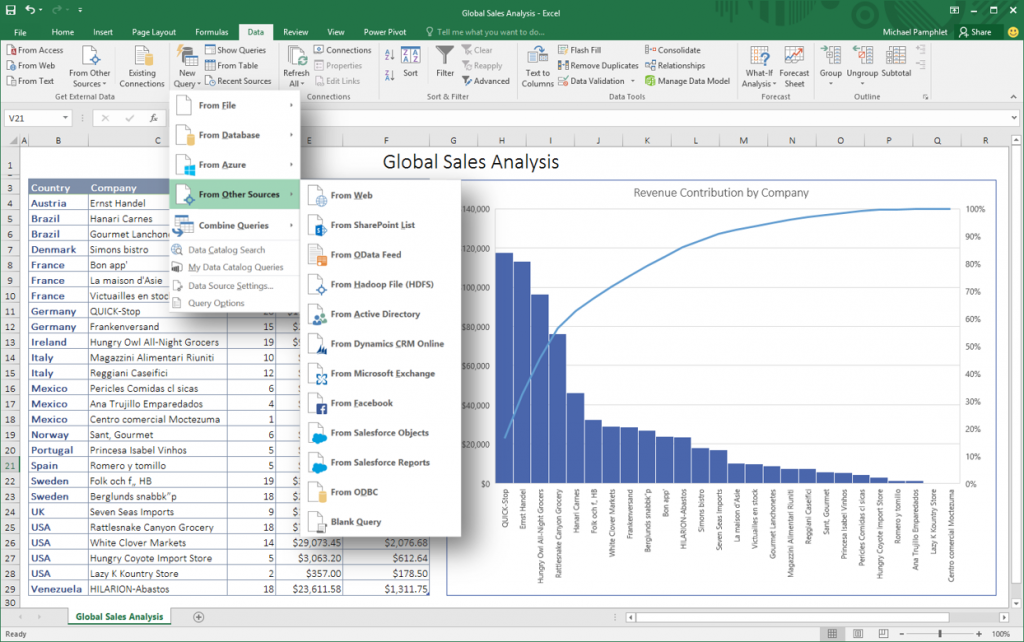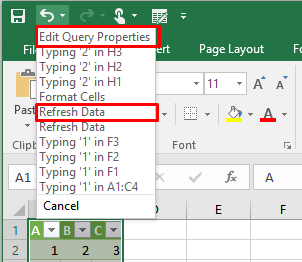Do you often import data into Excel? Do you ever need to shape your data before you analyze it and build your reports? We are excited to let you know that your get-data experience in Excel is about to change forever. In Excel 2016 we have integrated Power Query technology into the Data ribbon under the Get & Transform section. Power Query technology enhances the self-service business analytics experience in Excel by simplifying data discovery, access and collaboration.

Prior to the release of Excel 2016, Microsoft Power Query for Excel functioned as an Excel add-in that was downloaded and installed on Excel 2010 and 2013. In Excel 2016 we integrated the Power Query technology and experience into Excel. Power Query is no longer an add-in but is a native Excel feature from the Data tab, under the Get & Transform section.
In addition, most of the features in the Get & Transform section are now available for all users on all Office plans.
If you are not familiar with Power Query, here is a short summary of what you can now achieve in Excel 2016 with this new technology.
- Data connectivity—Connect to many new data sources, such as Facebook and Salesforce, to import the data into Excel 2016.
- Data shaping—Extract a preview of the data and load it to the Query Editor to define transformation steps that will allow you to transform the data to the format that meets your needs, such as remove, group, pivot or unpivot columns, and filter rows.
- Data catalog—You can find the data you need by searching the Power BI Enterprise catalog (a Power BI license is required).
- Repeatable refresh—Simply click the Refresh All button on the Data ribbon to repeat the import and transformation of the data to your workbook.
You can learn more about the new capabilities and how to use them here.
If you are familiar with the Power Query add-in in Excel 2010 and 2013, you know there are several advantages of having the Power Query technology native in Excel 2016, including:
- It’s always there—No longer a separate downloadable add-in. The Power Query technology is now available as part of Excel 2016, so you can rely on everyone using Excel 2016 to have it and be able to consume your workbooks.
- No complex activation—The Get & Transform group is visible and active by default on the Data tab.
- Undo support—Refresh and Edit Query operations on queries can be undone. You can refresh your query and keep all your previous actions in the Undo stack as well.

(In the image above we highlighted the Refresh Data and Edit Query Properties operations completed in the Workbook Queries task pane. Excel 2016 kept these operations in its Undo/Redo stack. In earlier versions, any Power Query operation deleted the Undo/Redo stack.)
- Object Model support—You can automate your queries with Object Model and develop your dream, an automated ETL Self-Service solution. With Macro Recording you can capture your query operations and generate VBA code that automates the query creation along with your report generation and customization on Excel. To learn more on Object Model support you can download this demo. More details on the Object Model interface is coming soon.
You can learn more about Power Query technology, which is available in the Get & Transform group in the Data tab, here.

